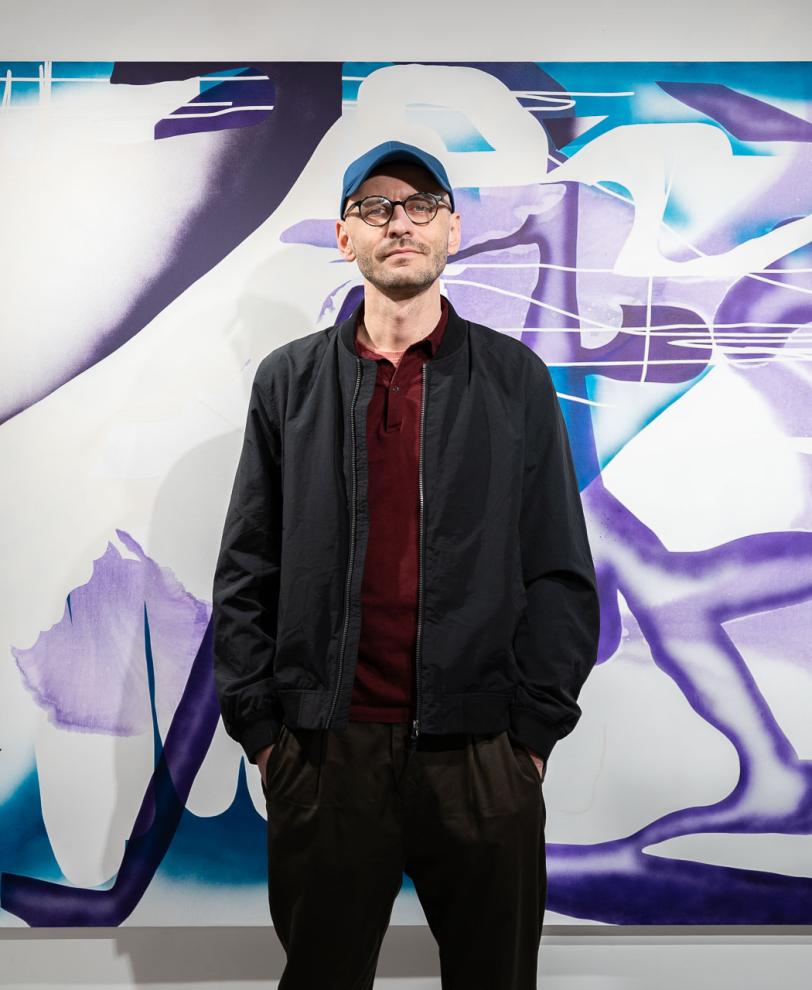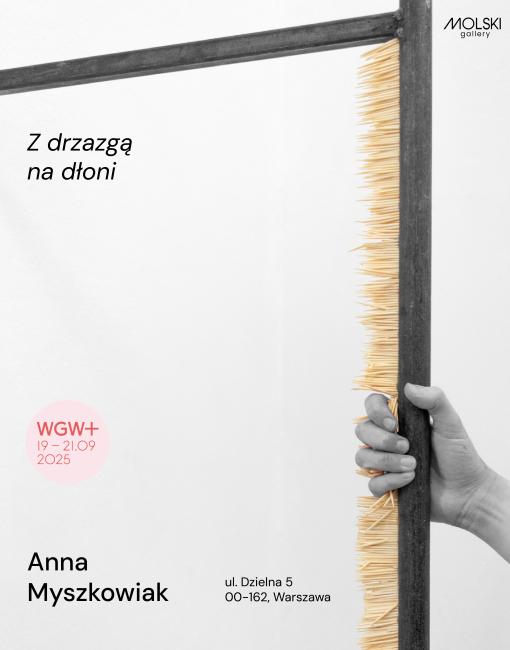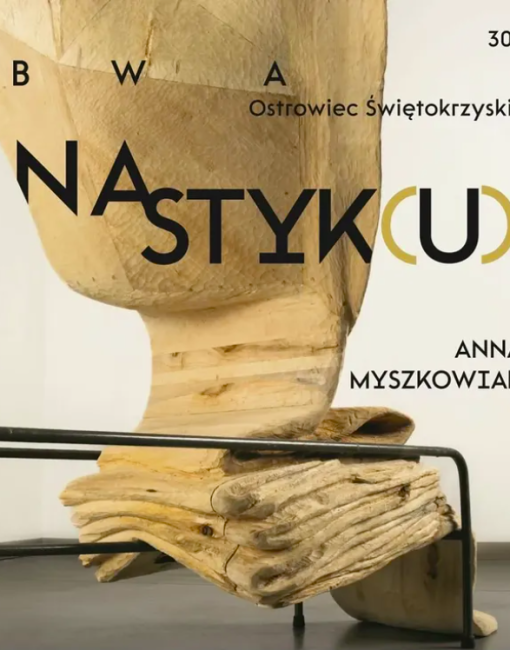
"Point of no return" Jakub Bąk about Sebastian's Krzywak exhibition "Eraserhead"
Point of no return
The main character in Ben Lerner's book 10:04 undergoes a medical procedure that requires anaesthesia. His insurance covers only a drug that instead of relieving pain causes short-term amnesia. The protagonist faces a dilemma: should he simply ignore an experience that he will not remember anyway? Is it worth paying extra for anaesthesia when in the end the result will be the same, keeping the course of the procedure unknown. The proposed remedy allows for the pain to occur, but instead of it going down as a traumatic memory, it becomes forgotten, thus joining countless other forgotten moments without any meaning at all.
Unfilled time becomes wasted and lost time, nowadays much more so than in Proust's times. A culture of undertime and hyperactivity reigns, where there is no time to waste and there is always something to do. That is why we constantly optimize, avoid empty runs, seize the day and try to squeeze as much out of life as possible. Silence during a meeting is embarrassing, looking into space is staring, staying still is at least strange, and even a moment of hesitation is perceived as weakness. In his painting practice, Sebastian Krzywak consistently introduces small gaps, bits of free space and moments of delay. He intentionally distances himself from spontaneous, intensely physical painting, where the surface, the paint, the brush, the hand and the entire cognitive apparatus of the artist become one. The artist often pours paint directly onto the surface of the painting or sprays it with a spray can, and even if only for fractions of seconds and by mere centimetres, a void opens up between the painter and the medium for a moment – and in this moment human agency ceases to be absolute and must confront a certain degree of freedom, chance and risk.
This small space separating the painted from the painter and the time between the act of painting and being painted may be disregarded, but it may also not be so insignificant. In the Japanese tradition, there is a concept called Ma, translated as a gap, a distance, a pause, and the character used to denote it is made up of two separate ones meaning gate and the sun 間, which could be poetically described as the sun shining through an open door. Even though it expresses a lack, something quite negative, it is considered an extremely desirable value, an essential element in almost every dimension of existence. From biological vegetation, where every organism needs a place that it could fill in by growing, through purely practical functions, e.g. in a business organization that requires openness to new challenges, to philosophy, spirituality and art where emptiness is a central figure. That is why some masterpieces of painting, such as The Pine Trees by Hasegawa Tohaku, are predominantly unpainted canvas, and the most beautiful works of Koji Kamoji are generally made up of an empty glass and a round hole torn in a sheet of paper. The Japanese put a lot of effort into tending to Ma. After each bow, they linger with their heads down for a while, they design gaps between buildings even in densely developed areas and often leave small apartments unfurnished. Even during important negotiations, where each participant's time is worth a fortune, they sometimes remain silent. In their opinion, the element of emptiness is necessary in order for something to come into being, understanding requires silence, a text needs blank page, and solving any problem requires time and a relaxed mind.
At first glance, Sebastian Krzywak's paintings seem to be the opposite of Far Eastern restraint and minimalism. Sharply defined figures, strong colours, diverse motifs, techniques and paint types. His painting is saturated, energetic and full of tension. However, if one follows his multi-stage process of creation, watching the subsequent situations and gestures, it turns out that, in most cases, emptiness is precisely the dominant feature of the process. Krzywak often creates the initial sketch which would later define the next steps of work on a computer, using very simple tools such as the eraser, which removes part of the colour-filled surface, and later transfers the removed area onto the canvas. These first steps already bring emptiness to the fore in two ways: as the erased colour and as the distance between the digital image and its physical representation. Erasing is the starting point: what is lost gives rise to what will be created, the defined gives way to the unknown and the negative becomes the potential. Sebastian Krzywak starts with emptiness and then consistently sticks to it. The artist says that one of the experiences that inspired him was the loss of his sense of smell due to Covid. The lack of smell and taste turned out to be a much more acute experience than when these senses are merely blunted. Anyone who has ever experienced this knows that this involves not only being deprived of a whole range of everyday impulses but also of a link to extremely valuable memory resources. The distinctive smell of a loved one, the aroma of home, holidays or vacation are all key to the extremely emotionally saturated spaces of existence, carriers of the aura, quick links to the fundamental memory registers that build the structure of the entire memory. They are what gives meaning and order to all other memories, and when suddenly lost, a vacuum appears that is difficult to fill.
Sebastian Krzywak's paintings are layered. The artist paints them successively on top of each other, changing techniques and types of paint. He often pours a bit of paint straight onto the canvas and spreads it using the force of gravity, which does not guarantee a precise form, but allows him to limit the area of action and secures an empty field. The artist also likes to use spray paints. In these cases, his painting literally happens in the air and the area covered with the stencil is as important as the one painted over. The importance of leaving space and covering the space with colour become interlinked in dynamic tension. To some extent, it is negative painting, reversing the order of painting, deconstructive, but also visually satisfying, temperature-matched, attractive to look at. It is also, in a sense, deeply romantic and, despite the lack of figuration, narrative. Successive plans, successive layers and events happen in a sequence, they interact, determine one another, struggle against one another and strive for a common goal in their relationships.
It is not easy to free your eyes from the strengths of Sebastian Krzywak's paintings: from the energized composition, dynamically outlined spots, aggressive cuts, subtle values and spectacular gradients, effects that appear suddenly and are subtly cut off. In almost all his paintings all this coexists along small autonomous areas – white spots. Interestingly, they are never pure white, but always come in several shades that falsify the symbolic dimension of this colour. White has an exceptionally strong semiotic character. Purity, identified with whiteness, was arbitrarily filled with moral properties, associated with the absence of sin, innocence, goodness and even holiness. Its use and hypervalorization are not limited to the sacred domain, but are equally strong in secular, including contemporary mythology. In medicine, white symbolises purity and freedom from contamination. At the same time, it symbolises the sphere of advanced technologies, creativity, innovation; white is interpreted as an open field of new possibilities. The famous Japanese designer and design theorist Kenya Hara devotes a lot of space to a blank page in his monograph White. In his opinion, the mere contact with the white surface triggers creativity. White is close to Ma. Just as an empty vessel inspires to be filled, a blank piece of paper or a new file enable and stimulate imagination. Whiteness and emptiness have both spiritual and practical meaning here: they are a necessary condition for creating and experiencing everyday life more fully, a life in which simplicity and subtlety become the most desirable means of expression. In Krzywak's painting we get several types of white, each of which is ambiguous and ready-made in some way. Some of them will be an abundance and excess of light, others will be a carrier of shadow and a trigger for darkness, all of them – an important landmark. Each use of white and emptiness makes the sequence of successive painting events even more dynamic and dramatic, almost narrative.
Good stories, those that arouse emotions and can lead to the highest accumulation of tension, are distinguished by a very general narrative pattern that can be reduced to the process of limiting possibilities. While in the first scene the protagonist is free to do absolutely anything, the more the action unfolds, the more his field of possibilities narrows. With each decision and twist of fate, necessity replaces contingency, until the finale when only one thing remains. Luke Skywalker must finally forgive his father, Hamlet must die, and Antigone must die twofold. The final layers of Sebastian Krzywak's spray paintings do not leave space for any corrections, they must be successful. In this way, the entire effort is put to a test at the very last moment. One mistake or a wrong decision can thwart all expectations. Sebastian Krzywak's paintings are like perfect stories. They are a record of a sequence of events, often very dramatic, mutually contradictory, cancelling each other, and yet brought to a point where nothing else can happen and the apparent chaos is brought to a state of a dynamic equilibrium.
Jakub Bąk





